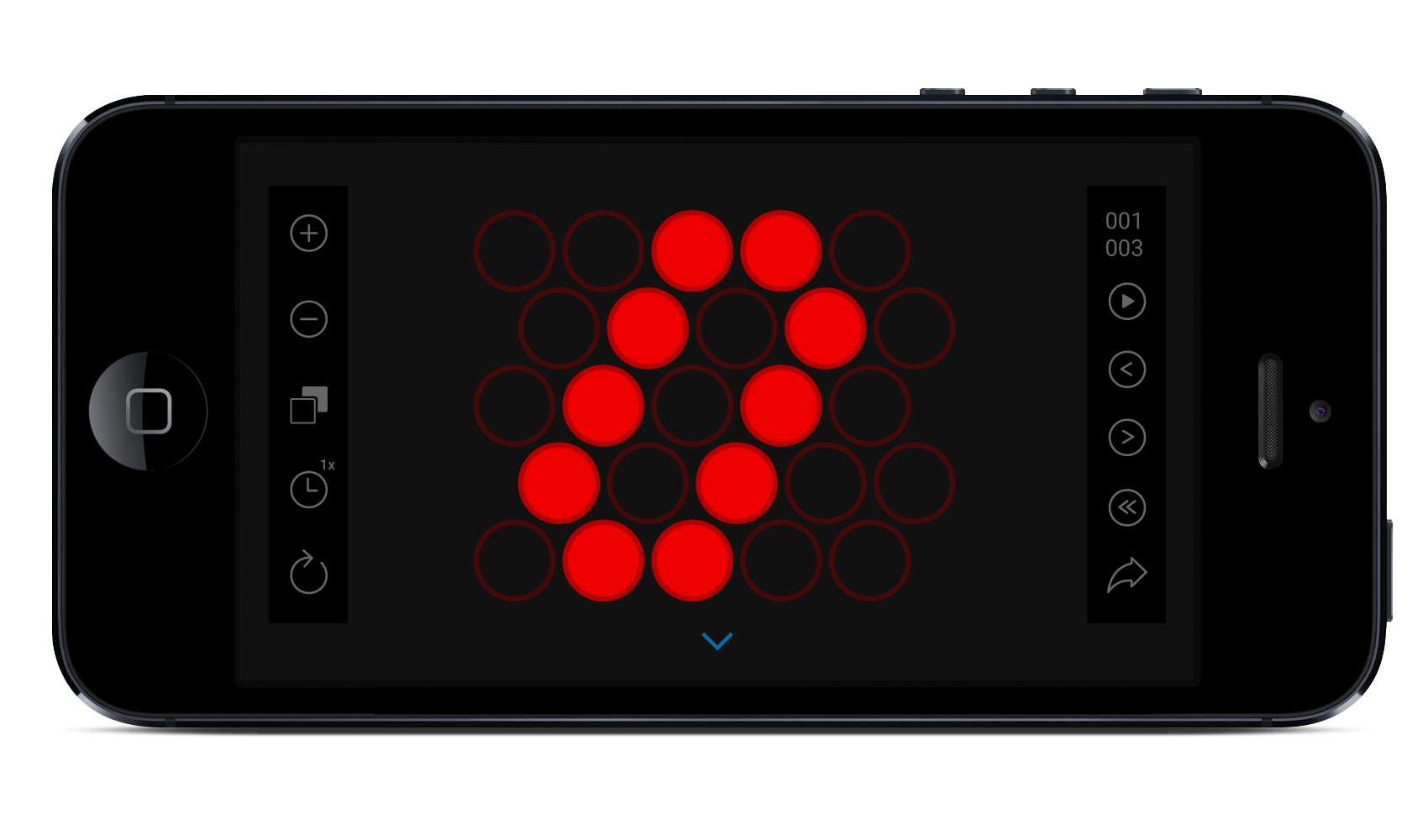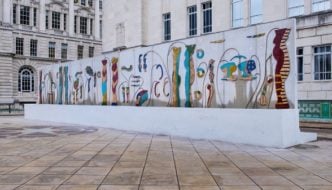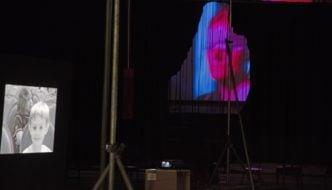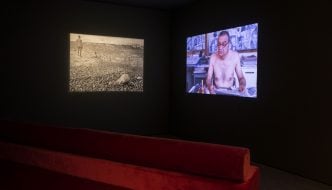
The Blesh app.
On Wednesday evening I was privileged to take part in the Engineering Fictions workshop hosted by the Bluecoat as part of the Liverpool Biennial. This was a science-fiction inspired workshop led by software artist Dennis McNulty and artist, researcher, and writer Jessica Foley, created to delve into the concept of ‘BLESH’.
Blesh is a portmanteau of the words ‘blend’ and ‘mesh’ and relates to the idea of a collective consciousness, whereby a group communicates with each other telepathically and acts as a single being. The phrase was coined by the writer Theodore Sturgeon in his science-fiction novella More Than Human (1953) and is thought to be the next step of human evolution towards a mature gestalt consciousness called the homo gestalt – a hive mind.
Dennis began the session by informing us about the idea of blesh, which he has reconceived as an iPhone app for making and sharing low-resolution animated dot gifs, stemming from the work of pioneering systems theorist Stafford Beer. Beer developed a system in the early 1970’s called Cybersyn, a method to control (then-Communist) Chile’s economy based on instantaneous feedback from devices placed in the country’s many factories in order to manage production and make everything more streamlined. This display device was intended to be part of a system control room and consisted of an array of bulbs flashing on and off to form dynamic icons indicating the ups and downs of Chile’s economy. Dennis then went on to say that Beer intended to include one of these devices in every Chilean household in order to measure general happiness. The entire premise sounds like something that was born out of the Star Trek writers room but was incredibly interesting to learn about. It is an ambitious model and fascinating to think about why Socialism wanted so much to pair itself with futurism, with East Germany and the Soviet Union both considering, though never actually constructing, projects similiar to Cybersyn. I suppose that in making its designs futuristic Communism would be given credence as the ‘system of the future’.
The whole workshop was more of an invitation into a dialogue that Jessica and Dennis had been having for some time about the design and properties of blesh, especially in relation to the modern word and this idea of us being a collective within social media. However, we did finish the session with a writing exercise based on the blesh concept that Jessica referred to as “Popcorn”. All participants were given a piece of paper each and asked to think of a single word and write it in the middle of the page. We were then told to pass our papers to our right, adding another single word to the page related to the word that we see in front of us, then passing it on again. This passing and writing became more and more rapid till the writing became almost subconscious with no time at all to think about what you wanted to write. Our pages were passed around the group 3 times until our original page was returned to us littered with everyone else’s words. We were then asked to read our pages aloud and make a list each consisting of everyone’s words based on what ‘sounded good’ to us. After we had done that we were told we now had the list of words we HAD to include in a piece of writing. A few of us who hoarded more words than others sighed at how difficult we’d just made it for ourselves.
As difficult as the exercise was to complete, it was certainly worth the effort. Everybody’s writing was creative, innovative, and often very entertaining. I found this concept of collective writing especially stimulating, especially in the context of the discussion we’d just been having about futurism and sci-fi. We were also invited to create portmanteaus of the words we had collected, a technique often used in science fiction writing to create a new word, but still have it seem somewhat familiar. My portmanteau words were ‘Pixeltry’ (Pixel & Symmetry), ‘Velcral’ (Velcro & Petal), and most fittingly, ‘Spock’ (Space & Shock).
Finally, we were given the opportunity to use the Blesh app. I was dubious at first, wondering what possible value could a few dots made to move around on a screen have, but proved myself wrong within two seconds of being shown how to use it. The process of making the art was unbelievably therapeutic – I felt like a child with a colouring book. The whole process is so simple, yet it takes on its own meaning for whoever uses it. Some made moving objects and other had dots chasing each other around the screen — it was pixel art in its most basic forms but felt artistically significant.
This was an insightful workshop and one that has given me a newfound interest in the futuristic as well as what it means to ‘blesh’.
You can catch more of Dennis McNulty’s work here, Jessica Foley’s work here, or you can follow the Engineering Fictions website.The BLESH iPhone app is also available to download. Alternatively, you can see more of what the Liverpool Biennial have to offer here.
Filed under: Film, TV & Tech
Tagged with: Blesh, Creative Writing, Cybersyn, Dennis McNulty, Engineering Fictions, Jessica Foley, Liverpool Biennial, More Than Human, Socialism, Stafford Beer, Theodore Sturgeon



Comments